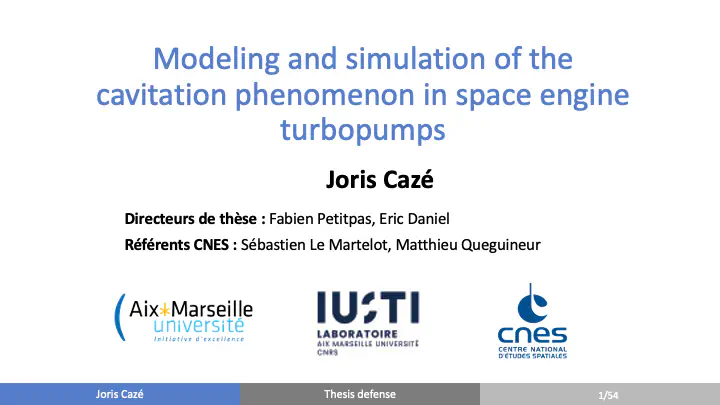
Abstract
Liquid propellant rocket engines provide propulsive effect by ejecting gases at high temperature and pressure into a nozzle. These gases are obtained from the combustion of the propellant located in the tanks. The routing of these cryogenic fluids to the combustion chamber requires the use of turbopumps able to provide the conditions required for the combustion. As the fluid travels, its local pressure may drop abruptly as a result of the pump’s suction. When the saturation pressure is reached, vapor bubbles and cavitation pockets may appear: this is the cavitation phenomenon. These structures, when passing through the blades, can cause a temporary overspeed of the pump, a blocking of the flow as well as various mechanical instabilities. In order to better understand this phenomenon and to limit its impact, my thesis work aims to propose a numerical modeling of this type of flow. The formation of steam when cavitation is encountered requires, at the same time, to consider the two-phase aspect of the flow and the compressibility of the phases. The family of two-phase flow models with diffuse interfaces is an ideal candidate for these needs and has been successfully used in the past to model cavitating flows. The rotation of the blades must also be considered, for this purpose, the pressure-velocity equilibrium diffuse interface model has been written in a rotating reference frame using the Moving Reference Frame method. On the basis of first encouraging results on a dummy inducer supplied with liquid oxygen, the performance of a water turbopump inducer is carried out in a cavitating regime and compared to the corresponding experimental data